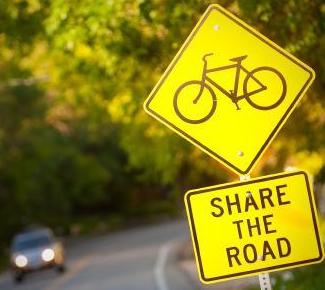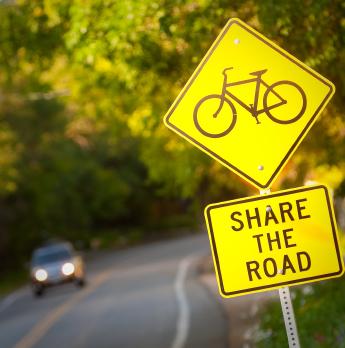 Sioux Falls, S.D. was named America’s Safest Driving City” in Allstate’s annual Best Drivers Report.
Sioux Falls, S.D. was named America’s Safest Driving City” in Allstate’s annual Best Drivers Report.
The company ranks 200 largest cities in terms of car collision frequency to identify which cities have the safest drivers.
According to the report, the average driver in Sioux Falls will experience an auto collision every 13.8 years, which is 27.6 percent less likely than the national average of 10 years.
“Allstate’s Best Driver’s Report was created to boost the country’s discussion on safe driving. Each year we hope the report will increase awareness about the importance of being tolerant and attentive behind the wheel,” Mike Roche, Allstate’s senior vice president of claims, said in a statement. “We want to recognize the city of Sioux Falls for being the safest driving city in America, and whether you drive in a large city, small city or a rural area, we encourage all Americans to practice safe driving habits and good car safety.”
Car crash fatalities are at the lowest level they’ve been since 1949, but still average more than 32,000 every year, according to the National Highway Traffic Safety Administration.
“It is vital for us to educate American drivers about safe driving behaviors they can demonstrate on the road that will help make our roadways safer,” Roche said. “Minimizing distractions, obeying traffic laws, and using your car’s safety features like turn signals and headlights, are all ways to be safer, no matter where you drive.”
Different levels and types of traffic, noise and activity, as well as varying road conditions and rules, can make big city driving different than driving in smaller cities or more suburban areas. Allstate offers the following tips for driving in both settings.
In larger cities:
• Allow plenty of time to reach a destination. Stop-and-go traffic, gridlock, traffic signal stops, pedestrian walkways and events that create traffic detours can increase travel time.
• Know what’s happening in the city during the time of travel. Find out if there are events that may impact traffic and listen to traffic reports on the radio. Avoid traffic jams or explore alternative routes, if possible.
• Stay alert. Be prepared to frequently stop or slow down for pedestrians, emergency vehicles, delivery trucks, parking cars, taxi cabs and public transportation vehicles such as city buses.
• Get directions to where you’re going. Review directions carefully in advance. Lost drivers should safely pull over and wait until they feel calm enough to get back on the road and use that time to get directions, check traffic or call for help.
In smaller cities and suburban areas:
• Watch the speed limit. Speed limits may be greater than in city traffic, which can lead some drivers to speed up and make roads dangerous.
• Look out for pedestrians, especially children. While there are typically fewer pedestrians or obstacles than in large metropolitan areas there are also typically fewer crosswalks, so pedestrians may be less aware of traffic rules such as where and when to cross the street.
• Know the rules of the road. Suburban streets typically have fewer streetlights and signs, or greater distance between lights and signs. This means darker conditions when driving at night and less opportunity to be reminded of speed limits and other road rules throughout the day.
• Keep a safe distance – especially around large vehicles. Large vehicles like semi-trucks are more likely found on suburban roads than in large metro areas. Keep a safe distance between your vehicle and others, and know that truck drivers might have limited visibility. If attempting to pass a truck, make there’s plenty of time and space to maneuver safely.
For the past eight years, Allstate actuaries have conducted an in-depth analysis of company claims data to determine the likelihood drivers in America’s 200 largest cities will experience a vehicle collision compared to the national average.
Internal property damage reported claims were analyzed over a two-year period (from January 2009 to December 2010) to ensure the findings would not be impacted by external influences such as weather or road construction.
A weighted average of the two-year numbers determined the annual percentages. The report defines an auto crash as any collision resulting in a property damage claim.
Allstate’s auto policies represent about 10 percent of all U.S. auto policies, offering a snapshot of what’s happening on America’s roadways.
Sioux Falls was revealed as the safest driving city for the fifth time in the report’s eight-year history. The top ten cities are:
| City & Overall Ranking | Collision Likelihood Compared to National Average | Average Years Between Collisions |
| 1. Sioux Falls, S.D. | 27.6% less likely | 13.8 |
| 2. Boise, Id. | 27.3% less likely | 13.8 |
| 3. Fort Collins, Co. | 26.7% less likely | 13.6 |
| 4. Madison, Wis. | 23.0% less likely | 13.0 |
| 5. Lincoln, Neb. | 19.3% less likely | 12.4 |
| 6. Huntsville, Ala. | 19.1% less likely | 12.4 |
| 7. Chandler, Ariz. | 18.9% less likely | 12.3 |
| 8. Reno, Nev. | 18.4% less likely | 12.3 |
| 9. Knoxville, Tenn. | 18.1% less likely | 12.2 |
| 10. Springfield, Mo. | 17.4% less likely | 12.1 |
Additional “road” scholars
For the eighth year in a row, motorists in Phoenix topped the list among commuters in American cities with more than one million people. Rankings among these cities:
| City & Overall Ranking | Collision Likelihood Compared to National Average | Average Years Between Collisions |
| 53. Phoenix, Ariz. | 1.6% less likely | 10.2 |
| 124. San Diego, Calif. | 14.0% more likely | 8.8 |
| 141 San Antonio, Texas | 20.4% more likely | 8.3 |
| 152. Chicago, Ill. | 25.9% more likely | 7.9 |
| 153. Houston, Texas | 25.9% more likely | 7.9 |
| 167. Dallas, Texas | 32.8% more likely | 7.5 |
| 176. New York, N.Y. | 41.1% more likely | 7.1 |
| 182. Los Angeles, Calif. | 48.5% more likely | 6.7 |
| 190. Philadelphia, Pa. | 64.1% more likely | 6.1 |
Cities holding the top spot for their respective city size:
| City Population | City & Overall Ranking | Collision Likelihood Compared to National Average | Average Years Between Collisions |
| 750,000 – 1 million | 60. Indianapolis, Ind. | 0.6% less likely | 10.1 |
| 500,000 – 749,999 | 13. Tucson, Ariz. | 16.4% less likely | 12.0 |
| 250,000 – 499,999 | 5. Lincoln, Neb. | 19.3% less likely | 12.4 |












